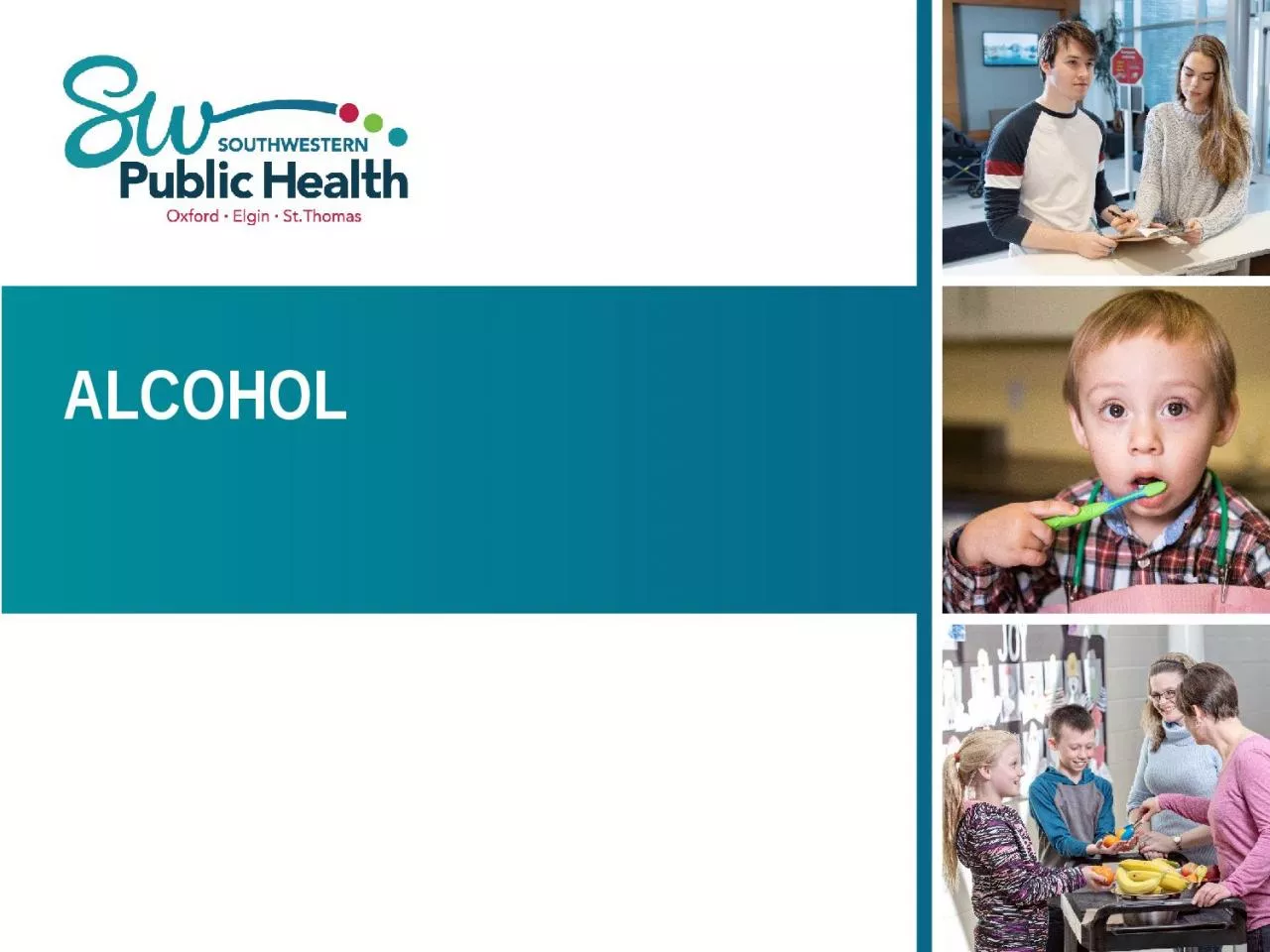

2 When does substance use become a problem Get the Facts Myth or FacT If a man and a woman are the exact same height and weight they will feel the effects of alcohol the same way MYTH Women are more sensitive to the effects of alcohol since they have less water in their bodies to dil ID: 1006239
Download Presentation The PPT/PDF document "Alcohol Substance use Continuum" is the property of its rightful owner. Permission is granted to download and print the materials on this web site for personal, non-commercial use only, and to display it on your personal computer provided you do not modify the materials and that you retain all copyright notices contained in the materials. By downloading content from our website, you accept the terms of this agreement.
1. Alcohol
2. Substance use Continuum2When does substance use become a problem?
3. Get the Facts!
4. Myth or FacT?If a man and a woman are the exact same height and weight, they will feel the effects of alcohol the same way.MYTHWomen are more sensitive to the effects of alcohol since they have less water in their bodies (to dilute alcohol) and their bodies do not break down alcohol as quickly.
5. Myth or Fact? Alcohol is the most common drug used among youth.#1FACTAlcohol is normalized. Sometimes people don’t even view alcohol as a drug. Even though legal drinking age is 19, it’s easily accessible.
6. Myth or fact?MYTHAlcohol is a depressant, meaning it reduces functioning of your central nervous system.Alcohol is a stimulant.
7. Myth or fact? Alcohol does not harm brain development after age 19 MYTHThe brain undergoes a considerable amount of development during the teen years and does not fully mature until around the age of 25.
8. What influences intoxication?A number of factors can increase your risk of alcohol poisoning, including:Your size and weightYour overall healthWhether you've eaten recentlyWhether you're combining alcohol with other drugsThe percentage of alcohol in your drinksThe rate and amount of alcohol consumptionYour tolerance levelWhether you are male or female
9. Myth or fact?Vomiting is a sign of alcohol poisoning FACTOne of the body’s ways of dealing with alcohol poisoning is eliminating the unabsorbed alcohol from the stomach via vomiting
10. Symptoms of Alcohol PoisoningPassing out, semi consciousCold, pale, bluish skinVomiting while sleepingSlow breathingSeizuresIncontinent of urine
11. Myth or fact?Alcohol poisoning only happens when you drink over 20 drinks in a nightMYTHAlcohol poisoning can happen at much lower level of alcohol consumption
12. Myth or fact?When you find someone unconscious from drinking too much- put them to bed and let them sleep it off.MYTHThis is a sign of alcohol poisoning *get medical help and call 911.
13. Action Recovery position Call 911Stay with the person until help arrivesNEVER leave the person to sleep it off
14. Recovery Position
15. Myth or Fact…Drinking coffee (caffeine) will help you sober up quicker MYTHNo amount of food or drink can change its effects. Time is the only way to sober up
16. Alcohol and Energy DrinksGrade 7-12 Students use of High-caffeine Energy Drinks – 34.1% (OSDUHS 2017) When alcohol is mixed with caffeine, the caffeine can mask the depressant effects of alcohol, making drinkers feel more alert than they would otherwise. As a result, they may drink more alcohol and become more impaired than they realize, increasing the risk of alcohol-attributable harms.Caffeine does not sober you up
17. Myth or fact? Youth who binge drink are more than 2x as likely to have unplanned sex, than those who do notFACTDrinking 4 or more drinks of alcohol at one time will lower your inhibitions, alter your thinking, and affect your decisions/actions
18. ViolenceRisky sexual behaviours Alcohol poisoning Injuries to self or othersFASD Immediate Health Risks
19. Myth or fact?Drinking Alcohol reduces the risk of cancer.MYTHThere is strong evidence of alcohol consumption and cancers of the esophagus, larynx, oral cavity and breast cancer in women.
20. Long Term Health RisksCardiovascular Problems Mental HealthSocial Problems Neurological ProblemsLiver Disease/Gastrointestinal Problems Cancer
21. Myth or fact?There are health risks to someone who has only 2 drinks a dayFACTDrinking any amount of alcohol has risks, you can lower risk by following the Low Risk Guidelines
22. Low-Risk Alcohol Drinking Guidelines
23. Low Risk Drinking Guidelines Videohttps://youtu.be/NbpdMFE-AIE
24. Alcohol and MedicationMixing alcohol with medication can put you at risk for dangerous reactions Can make medication less effective (or useless), can intensify side effects (drowsiness, nausea, dizziness, etc.) and can even cause severe medical problems (bleeding, breathing difficulties, heart problems, etc.)Interactions even if not taken at the same timeSpeak to a pharmacist to see if there is a reaction with alcohol
25. Myth or fact?You can drink 1 beer and still be legal to drive if you’re under 22 years age.FACTYou must have 0% blood alcohol concentration if you are driving under 22 years of age.22
26. The LawThe Liquor Control Act prohibits the sale of alcoholic beverages to any person under the age of 19, and prohibits the sale of alcohol to an intoxicated personDrinking and Driving laws are extensiveImpaired driving causing bodily harm – Maximum Sentence:10 Years in Prison Impaired driving causing death – Maximum sentence: Life Imprisonment Owner/Operator Liability
27. “New” LawAs of August 1st, 2010 – Any driver 21 and under and novice drivers must have ZERO ( 0%) Blood Alcohol Concentration = NO Alcohol .As of July 1, 2018 - Young and novice drivers will also be prohibited from having any presence of cannabis in their system as well as other drugs.
28. Playing Matters Drinking games result in a large amount of alcohol being consumed in a short amount of time Examples include: Century Club, Beer Pong, Kings, Chug-A-Lug, Flip CupGet caught up in the “game” and lose track of how much has been consumed
29. Community SupportsYour Doctor or Nurse PractitionerYour School NurseSchool Social Worker
30. Community Supports
31. Community Supports